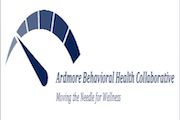[Editor's note: Dr. Harise Stein at Stanford University edits a web site -- abuseresearch.info -- that focuses on the health effects of abuse, and includes research articles on ACEs. Every month, she's posting the summaries of the abstracts and links to research articles that address only ACEs. Thank you, Harise!! -- Jane Stevens]
Harris HR, Wieser F, Vitonis AF, Rich-Edwards J, et. al.
Early life abuse and risk of endometriosis. Hum Reprod. 2018 Sep 1;33(9):1657-1668. PMID: 30016439
Using data from the Nurses’ Health Study II, laparoscopically-confirmed endometriosis was associated with a history of childhood severe physical abuse (1.20 times increased risk), severe sexual abuse (1.49), and severe chronic abuse of multiple types (1.79).
Thomas JC, Letourneau N, Campbell TS, et. al.
Social buffering of the maternal and infant HPA axes: Mediation and moderation in the intergenerational transmission of adverse childhood experiences. Dev Psychopathol. 2018 Aug;30(3):921-939. PMID: 30068422
Of 243 mother-baby pairs, maternal ACE score influenced maternal HPA axis reactivity (stress hormone system response) during pregnancy, which in turn influenced baby HPA axis reactivity after birth – a mechanism for intergenerational transmission of trauma. Mother’s perceived social support during pregnancy decreased the influence of her ACEs on her HPA axis reactivity, which also decreased transmission to her child.
Steine IM, Winje D, Krystal JH, et. al.
Cumulative childhood maltreatment and its dose-response relation with adult symptomatology: Findings in a sample of adult survivors of sexual abuse. Child Abuse Negl. 2017 Mar;65:99-111. PMID: 28131947
For 278 adult Norwegian survivors of childhood sexual abuse, with mean age of first abusive incident 6.4 years, there was an increasing dose-response effect of additional childhood maltreatment experiences for adult PTSD, anxiety, depression, dissociation, insomnia, nightmares, physical pain, emotional pain, relational problems, and self-harm. Perceived social support was a significant modifier of these results.
Chanlongbutra A, Singh GK, Mueller CD.
Adverse Childhood Experiences, Health-Related Quality of Life, and Chronic Disease Risks in Rural Areas of the United States. J Environ Public Health. 2018 Jul 11;2018:7151297. PMID: 30112012
“An increasing ACE score corresponds to higher likelihood of fair/poor general health, poor mental health, activity limitation, and chronic disease morbidity for both rural and urban areas.”
Scheidell JD, Quinn K, McGorray SP, et. al.
Childhood traumatic experiences and the association with marijuana and cocaine use in adolescence through adulthood. Addiction. 2018 Jan;113(1):44-56. PMID: 28645136
From a national adolescent study with 12,288 participants, authors observed a dose-response relationship between the number of childhood traumas and drug use. For those experiencing four or more childhood traumas, use of marijuana was 6.92 times more likely and use of cocaine 9.54 times more likely.
Baiden P, Stewart SL, Fallon B.
The role of adverse childhood experiences as determinants of non-suicidal self-injury among children and adolescents referred to community and inpatient mental health settings. Child Abuse Negl. 2017 Jul;69:163-176. PMID: 28477476
Of 2038 children and adolescents seen in mental health settings, 29% engaged in non-suicidal self-injury – 49% higher odds if they had a history of physical abuse, and 60% higher odds with a history of sexual abuse. Social support decreased the odds of self-injury by 26%.
Banyard V, Hamby S, Grych J.
Health effects of adverse childhood events: Identifying promising protective factors at the intersection of mental and physical well-being. Child Abuse Negl. 2017 Mar;65:88-98. PMID: 28131000
For 2565 rural adults with average age of 30 and who had been exposed to high levels of childhood maltreatment, those with strengths in emotion regulation, meaning making, community support, social support, and practicing forgiveness reported better health outcomes.

Comments (0)